People
BS - Mechanical Engineering, Boğaziçi University '00
MS - Mechanical Engineering, University of Michigan '01
MS - Mathematics, University of Michigan '02
PhD - Mechanical Engineering, University of Michigan '05
BS - Marmara University, Mechanical Engineering '07
MS - Koc University, Mechanical Engineering '09
PhD - Bogazici University, Mechanical Engineering - present
Thesis topic: Visco-hyperelastic material modeling using linkage mechanisms (Co-supervised with Prof. Fazıl Ö. Sönmez)
BS - Bogazici University, Mechanical Engineering '17
MS - Bogazici University, Mechanical Engineering - present
Thesis topic: Design of a 3D periodic vibration isolation structure with inertial amplification mechanism
BS - Bogazici University, Mechanical Engineering '19
MS - Bogazici University, Mechanical Engineering - present
Thesis topic: Design and analysis of a broadband elastic metamaterial for load bearing applications

BS - Yildiz Technical University, Mechanical Engineering '18
MS - Bogazici University, Mechanical Engineering - present
Thesis topic: Analysis and design of a 3D periodic vibration isolation structure with inertial amplification mechanism
BS - Bogazici University, Mechanical Engineering '19
MS - Bogazici University, Mechanical Engineering - present
Thesis topic: A passive non-reciprocal vibration propagation system
BS - Istanbul Technical University, Mechanical Engineering '19
MS - Bogazici University, Mechanical Engineering - present
Thesis topic: Design of a self-adjusting and self-powered dynamic vibration absorber
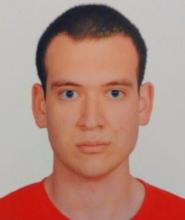
BS - Middle East Technical University, Mechanical Engineering '18
MS - Bogazici University, Mechanical Engineering - present
Thesis topic: Design and analysis of passive self-tuned vibration energy harvester resonator with lever-type inertial amplification mechanism

Sergen HAYDIN
BS - Bogazici University, Mechanical Engineering '17
MS - Bogazici University, Mechanical Engineering '21
Title: Adjustable stiffness vibration isolator/absorber system
Abstract: A new vibration isolator/absorber system with adjustable stiffness is developed and studied in this thesis. If this system is used in the load path between the excitation source and the receiver object, then it can be treated as a variable stiffness isolator. On the other hand, if it is attached on the receiver object, then it can work as a dynamic vibration absorber with variable natural frequency. The designed system consists of two main parts; axially loaded beams and quasi-zero stiffness mechanism. To create axial load on the beams, the quasi-zero stiffness mechanism is connected to the beams via a wire. As the axial force on the beams increases, the natural frequency of the system decreases. However, a large axial force is needed to significantly decrease the natural frequency of the system. With the help of the quasi-zero stiffness mechanism, this adjustment process can be done with almost zero effort. The quasi-zero stiffness mechanism consists of negative and positive stiffness elements. Negative stiffness is obtained using bistable buckled beams while positive stiffness is provided by a helical compression spring. Both analytical and finite element studies are provided for stiffness and natural frequency calculations. Moreover, the system is manufactured and examined experimentally. It is shown that analytical, numerical and experimental results are close. The system can be tuned with small effort and its natural frequency can be adjusted between 3.4 Hz and 16.4 Hz. Hence, the stiffness of the system can vary more than 20 times.
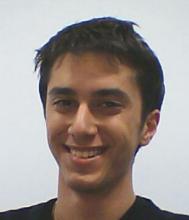
Mehmet Utku DEMİR
BS - Bogazici University, Mechanical Engineering '17
MS - Bogazici University, Mechanical Engineering '21
Title: Analysis and design of a vibration isolation table having quasi-zero stiffness along multiple axes
Abstract: In this thesis, stiffness adjustment mechanisms are developed to tune the horizontal (parallel to the ground) stiffness of vibration isolation systems to quasi-zero values along three axes (translational stiffness in the horizontal x and y axes, torsional stiffness in the vertical z-axis) depending on the payload carried. When the elastic beams that support the payload weight are placed in the direction of gravity, the horizontal stiffness of the system decreases as the payload mass increases. Hence, the horizontal natural frequencies of the system decrease, and the isolation performance of the system at low frequencies increases. However, when the supported payload mass decreases, the opposite case occurs. In this study, mechanisms that separately adjust the translational and torsional stiffness are developed so that the natural frequencies are kept at low and constant values even if the payload changes. The developed wire tension mechanism adjusts the translational and torsional stiffness together, while the developed slide mechanism adjusts the torsional stiffness independently from the translational stiffness. Besides, since these mechanisms operate without friction, the isolation bandwidth of the system is very large. To increase the upper limit of the bandwidth above 100 Hz that most systems in the literature cannot surpass, the elastic beams are created with a unique design. Analytical and finite element models show that the system can operate at low frequencies, and a large bandwidth is obtained. The results of these models are validated by experiments. After the design parameters are optimized, the experimental studies performed on the produced system show that the translational and torsional natural frequencies can be adjusted between 0.5 Hz and 1.5 Hz, and the upper limit of the isolation bandwidth can be increased above 100 Hz.
Currently, PhD Student in the Department of Mechanical Engineering at University of Michigan
Ahmet Onur ÖZYAR
BS - Middle East Technical University, Mechanical Engineering '08
MS - Bogazici University, Mechanical Engineering '19
Title: Design of a passive self-tuning lever-type vibration isolation system
Abstract: In this study, a novel self-tuning passive lever-type vibration isolation system for base excitations is described. Due to inertial coupling within the vibration isolation system, an antiresonance frequency is generated, which depends on the amplification ratio of the lever. At this frequency, the instant center of zero velocity of the lever coincides with the payload hinge point. As a result, the payload experiences minimum amount of vibration. When the excitation frequency changes, the system changes the lever ratio so as to bring the antiresonance frequency to coincide with the excitation frequency to suppress the output vibration. The designed mechanical system does not require any electronic sensors or actuators. The self-tuning operation is enabled by a vibro-impact type actuator powered by the input vibration rendering the system self-powered. This actuator is placed below the payload hinge and moves the lever in the appropriate direction to bring the instant center of zero velocity to the payload hinge position. Hence, the system achieves the optimum lever ratio for minimum vibration output. The equations of motion of the system are derived and the location of the instant center is obtained analytically. Then, multi-body dynamic simulations are carried out to verify the self-tuning response of the system. An experimental set-up incorporating a variable ratio lever, a softly suspended ground mass and a vibro-impact type actuator, is designed. Experimental results validate that the system always goes to antiresonance condition in the working frequency range.
Currently, R&D Engineer at Scania
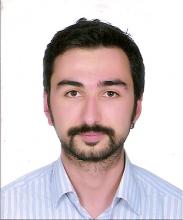
Adil Han ORTA
BS - Bogazici University, Mechanical Engineering '15
MS - Bogazici University, Mechanical Engineering '18
Title: Design of vibration isolation systems that incorporate axial to rotary motion conversion mechanisms
Abstract: In this thesis, compliant axial to rotary motion conversion mechanisms are examined to generate isolation band gaps. To achieve low frequency phononic band gaps, LADD mechanism is examined, and its the effective inertia is aimed to be amplified. Moreover, to increase the isolation band gap of this structure, helical wire theory is investigated, and both analytical and finite element models of the mechanism are created and validated with experiments. Then, by applying prestress and optimizing the cross section area of the helical wires, the phononic band gap is maximized at low frequencies. A quite wide band gap with ω1/ω2=0.215 is obtained with the use of idealized roller boundary conditions. However, this type of boundary condition is compliantly realized via wires, the frequency ratio (ω1/ω2) increased to 0.5 and the band gap became narrower. Therefore, a novel axial to rotary motion conversion mechanism is proposed. In the proposed unit cell, a stop band is governed by two different types of modes. The lower and the upper natural frequencies of stop band is limited by the coupled axial-torsional and bending modes, respectively. For stop band maximization, cross and spiral flexures are used due to their high bending stiffness and low axial stiffness. Besides, helical wires with large pitch angle are utilized to create large rotational motion from axial translations. Thus, the effective inertia of the mechanism is amplified. By using analytical and finite element models, band structure and the dynamic response attributes of the structure are examined, and parametric studies are conducted. 3D printing and laser cutting is used during prototyping. Finally, comparison of the analytical, computational and experimental frequency response results is held for validation. In conclusion, a very wide phononic band is obtained with ω1/ω2=0.221.
Currently, PhD Student in the Department of Physics and Astronomy at KU Leuven

Efe ÖZKAYA
BS - Bogazici University, Mechanical Engineering '13
MS - Bogazici University, Mechanical Engineering '16
Title: Eddy current damping (ECD) applications for vibration isolation purposes
Abstract: In this thesis, passive eddy current damping (ECD) is used in two different novel designs that show vibration stop bands. One includes an inertial amplification mechanism and the other includes local resonators. In both designs, copper tube-ring magnet couple is used as a passive eddy current damper. The reason for such usage arises from the fact that this damping method does not require an external power source and its damping constant can be easily changed. The change in the damping constant is obtained by adjusting the distance between the conducting material which is the copper tube and the magnetic field generator which is the magnet. In the first design, which includes an inertial amplification mechanism, vertical motion is dampened by copper tube-ring magnet couple, which serves as a viscous damping component. For this design, a prototype is produced and experimental measurements are taken to show the effect of damping on vibration amplitudes. In the second design, which includes local resonators, it is aimed to generate a vibration stop band at low frequencies. The effect of ECD on stop band width, resonance peaks and anti-resonance depth on the frequency response results are observed. For comparison purposes, frequency response of this design is obtained analytically, experimentally and numerically. By both of these designs, it is shown that ECD can be used in different structures to attenuate vibrations.
Next, PhD Student in the Department of Mechanical Engineering at Stevens Institute of Technology
Currently, Postdoctoral Research Fellow at Icahn School of Medicine
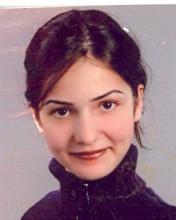
Gizem ACAR
BS - Bogazici University, Mechanical Engineering '10
MS - Bogazici University, Mechanical Engineering '12
Title: Phononic band gaps in two-dimensional periodic structures with inertial amplification mechanisms
Abstract: In this thesis, a 2D periodic structure equipped with inertial amplification mechanisms is designed. The structure is optimized to obtain a wide and deep phononic band gap in low frequency ranges. The aim is to prevent wave propagation, hence suppress mechanical vibrations. In the literature, there are two common ways to generate band gaps, Bragg scattering and resonance scattering. Alternative to these methods, inertial amplification method is used in this study. Different types of inertial amplification mechanisms are discussed. Then, a 1D distributed parameter model, which is equivalent to the proposed inertial amplification mechanism, is used to construct the 2D periodic structure. First two natural frequencies of the 1D model are found analytically. The model is designed to have a band gap between these two natural frequencies. Yet, in order to calculate the frequencies more accurately and easily optimize the model, Finite Element Analysis is conducted on the model. The 2D periodic structure is composed of two different 1D unit models. These models are optimized so that the 2D structure has a wide and deep band gap at low frequencies. Prototypes of the two 1D unit models and the 2D structure are produced, and frequency responses of them are obtained by experimental modal analysis. The experimental and numerical frequency response results match quite well, which validate that the 2D structure has a wide and deep band gap.
Next, PhD Student in the Department of Mechanical Engineering at Michigan State University
Currently, Assistant Professor at Stevens Institute of Technology
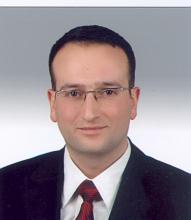
Osman YÜKSEL
BS - Bogazici University, Chemical Engineering '08
MS - Bogazici University, Mechanical Engineering '12
Title: Active noise control in a duct with flow (Co-supervised with Prof. Eşref Eşkinat)
Abstract: In this thesis, active noise control in a duct with flow is investigated. A one dimensional acoustic duct model, in which fluid medium inside the duct has a mean flow velocity, is presented. The acoustic duct model is solved in Laplace domain and infinite dimensional system transfer functions are obtained. For controller designs, appropriate microphone and noise canceling source locations inside the duct are determined. In numerical studies, ideal boundary condition case (open end) and general boundary condition case (frequency dependent impedance end) are investigated. For these boundary conditions, low order finite dimensional transfer function approximations of actual system transfer functions are obtained. It is found that, in a selected frequency range, approximations represent actual system in a satisfactory way. By using approximated system transfer functions, low order optimal H2 and H? controllers are synthesized via linear matrix inequalities method found in linear time invariant finite dimensional control theory. Closed loop frequency response and time domain simulations show that the controllers successfully suppress unwanted sound which propagates along the duct.
Next, PhD Student in the Department of Mechanical Engineering at Boğaziçi University
Currently, Assistant Professor at Kırklareli University
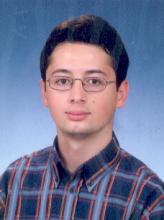
Kamil KOÇAK
BS - Bogazici University, Mechanical Engineering '08
MS - Bogazici University, Mechanical Engineering '11
Title: Design of a compliant lever-type passive vibration isolator using quasi-zero-stiffness mechanism
Abstract: In this thesis, design and analysis of a new passive vibration isolator usingcompliant lever-type and quasi-zero-stiffness (QZS) mechanisms is provided. At first, various systems are designed without QZS mechanism. It is aimed to create antiresonance frequency by using lever-type mechanism. Anti-resonance occurs when the inertial force generated by the levered mass cancels the spring force. Since the lever type mechanism increases the effect of the isolator mass, it is capable of isolating a relatively heavy body with little mass in itself. These designs are examined analytically, numerically and experimentally. First, the systems are modeled with lumped and distributed parameters. Then, the system is modeled by finite element method (FEM). Optimization of the design is made to get highest isolation in the widest frequency range. As a result, the optimized design with desired properties is found. At last, the optimized design is manufactured and tested. In the second part, QZS mechanism is attached to the design. This design consists of multiple parts which renders the system adjustable. The equations of negative stiffness mechanism are provided. FEM results are compared with the analytical results. The working principle of adjustable mechanisms are explained. As a result, design and analysis of a new compliant lever type passive vibration isolator using QZS mechanisms is provided. Finally, the design is manufactured and tested. This design can also be adjusted for the designed vibration isolation frequency range and good isolation levels can be acquired especially at low frequencies.
Next, PhD Student in the Department of Mechanical Engineering at Georgia Institute of Technology
Currently, Assistant Professor at Istanbul Medeniyet University
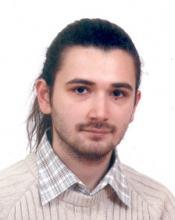
Mustafa Ali ACAR
BS - Bogazici University, Mechanical Engineering '08
MS - Bogazici University, Mechanical Engineering '11
Title: Design of an adaptive-passive dynamic vibration absorber composed of a string-mass system equipped with negative stiffness tension adjusting mechanism
Abstract: In this study, a new adaptive-passive dynamic vibration absorber design is discussed. This proposed design is composed of a stiff string under tension with a central mass attachment as a dynamic vibration absorber (DVA), a negative stiffness mechanism as a string tension adjustment aid and a tuning controller to make it adaptive. Dynamic properties of adaptive-passive DVA systems are adjusted in real-time by generally varying their stiffness. The adaptive-passive DVA design subject to this thesis uses the string tension as a tuning parameter. The dependency of the natural frequencies of this system on the string tension is analyzed using finite element method and verified analytically. Additionally, a method for adjusting the string tension with almost zero effort is proposed. To achieve this goal, the design incorporated a negative stiffness element to create a quasi-zero stiffness and constant zero-force mechanism when combined with the string. Force-displacement analysis of a system composed of a pre-loaded spring and a rigid link is examined analytically. It was shown that the system can have constant negative stiffness behavior. A string tension adjustment algorithm is created which tunes the DVA system depending on the magnitude and frequency of the most dominant component of the vibration signal. Finally, a prototype of the complete design is built. A series of experimental procedures are conducted on the prototype with the intention of verifying the theoretical calculations. Results obtained from these experiments are also given in the thesis.
Next, PhD Student in the Department of Mechanical Engineering at Michigan State University
Currently, R&D Engineer at Crysler

Veysel DOĞAN
BS - Middle East Technical University, Mechanical Engineering '84
MS - Bogazici University, Mechanical Engineering '11
Title: Tuned mass damper applications on slender structures to improve earthquake and wind response
Abstract: The subject of the study is to improve earthquake and wind response of slender structures by using Tuned Mass Damper (TMD) applications. TMD application on main structure reduces the structural response amplitude by creating additional damping. A vibration analysis employing transfer matrices was applied for a slender structure with varying cross sections. The analysis is applied to an existing reinforced concrete minaret structure as a case study due to its poor dynamic response and lack of sufficient studies. Best applicable and efficient TMD type was investigated to improve the dynamic response of selected minaret structure. Structure response was analyzed with and without TMD installation by using MATLAB for discrete mass model. Harmonic excitation was considered to simulate the ground motion and improvements in the response were discussed. SAP2000 software was also used to analyze the same structure through Finite Element Method technique. 1999 Kocaeli and 1999 Düzce earthquakes ground motion records were used to verify the effectiveness of the developed TMD. Wind response is also considered. Detailed fabrication drawings were prepared by considering the challenging installation constraints. Feasibility study of the developed TMD was discussed for applications either in new structures or retrofits.
Currently, General Manager of Doka Endüstri
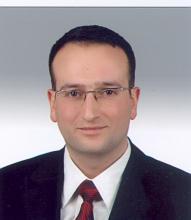
Osman YÜKSEL
BS - Bogazici University, Mechanical Engineering '08
MS - Bogazici University, Mechanical Engineering '12
PhD - Bogazici University, Mechanical Engineering '18
Title: Shape and topology optimization of inertial amplification induced phononic band gap structures
Abstract: Inertial amplification is a novel phononic band gap generation method in which wide vibration stop bands can be obtained at low frequency regions. The engineering importance for this novelty comes from the fact that the phononic band gap structures can be utilized as passive vibration isolators for the low frequency range. In this thesis, primarily the research is focused on the improvements achieved on stop band widths and depths via employment of structural optimization tools. To that end, size, shape and topology optimization studies are conducted on a compliant inertial amplification mechanism, then with these compliant unit cell mechanisms, one and two dimensional periodic structures are formed. Consequently, by means of these periodic structures, it is demonstrated that the vibration transmission is inhibited for wide ranges at low frequencies. The work comprises analytical and numerical studies and more importantly experimental validation of the results. Moreover, topology optimization studies performed during the thesis lead to the development of a new fast topology optimization algorithm to obtain structures with maximized fundamental frequency, though this was not originally among the research objectives. Finally, explicit problem formulations and a comprehensive review on topology optimization are also presented.
Currently, Assistant Professor at Kırklareli University

Akın OKTAV
BS - Istanbul Technical University, Mechanical Engineering '03
MS - Bogazici University, Automotive Engineering '05
PhD - Bogazici University, Mechanical Engineering '16
Title: Computational and experimental investigation of low frequency noise in passenger vehicles (Co-supervised with Prof. Günay Anlaş)
Abstract: Acoustic comfort of passenger vehicles has become a significant competition factor in the market, as much as the others, i.e. styling, power, fuel consumption and budget. Vibro-acoustic response studies play an important role in developing countermeasures to noise problems, before or after vehicle launch. In this study, low frequency noise characteristics of passenger vehicles are addressed. Vehicle noise variability and dominant paths that cause low frequency booms are investigated. To diagnose the cause of variability, a systematic approach is proposed, where all steps are explained briefly. It is deduced that predominant paths, which are found to be the main contributors of diagnosed booms, are also the root causes of variability observed. Current practice of experimental transfer path analysis is discussed in the context of trade-offs between accuracy and time cost. An overview of methods, which propose solutions for structure borne noise, is given, where assumptions, drawbacks and advantages of methods are stated theoretically. Applicability of methods is also investigated, where the engine induced structure borne noise of the sedan studied is taken as a reference problem. Sources of measurement errors, processing operations that affect results and physical obstacles faced in the application are analyzed. Effects of damping, reasons and methods to analyze them are discussed in detail. In this regard, a new procedure, which increases the accuracy of results, is also proposed. Coupled vibro-acoustic response of the sedan is analyzed, and the effect of folding rear seat aperture is studied. An analytical solution is proposed to calculate acoustic eigenfrequencies. Then, uncoupled acoustic eigenfrequencies of the actual cavity, where trunk and cabin cavities are connected through the aperture are computed. It is shown that planar acoustic eigenfrequencies of the sedan can approximately be calculated using the analytical solution proposed. To further clarify the impact of folding rear seat aperture, coupled vibroacoustic response of the sedan is analyzed through different case studies. It is observed that booms are highly correlated with the calculated uncoupled planar acoustic eigenfrequencies. It is concluded that proposed analytical solution can be effectively used in calculation of acoustic eigenfrequencies and identification of booms, rather performing a detailed computational work. Experimental modal analysis studies are carried out to update the computational model. The updated model is then used in modification prediction studies. Finally, it is shown that the procedures proposed works well with real problems.
Currently, Assistant Professor at Alanya Alaaddin Keykubat University
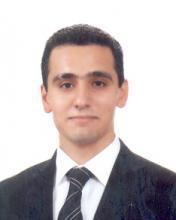
Semih TANIKER
BS - Bogazici University, Mechanical Engineering '08
MS - Bogazici University, Mechanical Engineering '11
PhD - Bogazici University, Mechanical Engineering '15
Title: Design and analysis of three-dimensional phononic band gap structures with embedded inertial amplification mechanisms
Abstract: In this study, three-dimensional (3D) phononic band gap structures are investigated. First, infinite and finite periodic simple cubic, body centered cubic and face centered cubic lattices with and without inertial amplification mechanisms are considered. These 3D lattices are modeled with mass and spring elements that are parametrically varied to observe their effects on band gap (stop band) limits. When inertial amplification mechanisms are used in the infinite periodic lattices, wide low frequency band gaps are generated. Moreover, wide and deep phononic gaps are obtained by using moderate amount of unit cells in the case of finite periodic lattices. Then, 3D phononic band gap structures are formed using distributed parameter inertial amplification mechanisms. The resonance and antiresonance frequencies that characterize the first vibration stop band of the building block mechanism are obtained analytically and by finite element method. The mechanism is optimized to yield wide vibration stop bands in an octahedron and a 2x3 array of octahedrons. Furthermore, these structures are manufactured using a 3D polymer printer and their experimental frequency responses are obtained. Structural damping is added to the finite element model in order to match the resonant peak magnitudes of the numerical and experimental frequency response results. Moreover, a new inertial amplification mechanism is designed by adding constraining beams that reduce the degree of freedom of the initial mechanism. Consequently, ultra wide band gaps at low frequencies are attained. To sum up, it is demonstrated that the 3D structures built with inertial amplification mechanisms are capable of isolating excitations in longitudinal and two transverse directions in a very wide frequency range. Prototypes of the two 1D unit models and the 2D structure are produced, and frequency responses of them are obtained by experimental modal analysis. The experimental and numerical frequency response results match quite well, which validate that the 2D structure has a wide and deep band gap.
Next, R&D Engineer at Roketsan
Currently, Post-doctoral Resarcher at Caltech